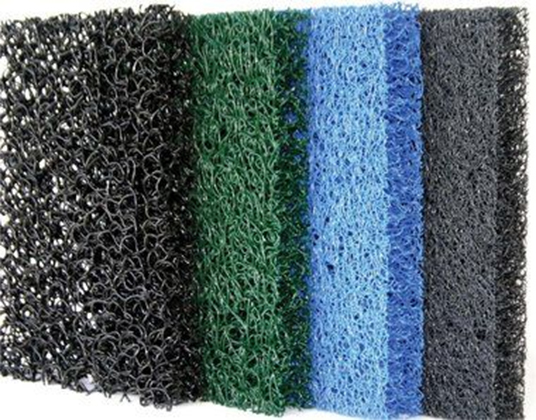
Pond filtration is a difficult process, but it’s essential for a stable ecosystem. It is a process that can be improved through the use of high-quality media and accelerated by the addition of chemical filtration, an additional stage of filtration that is not typically included with filters as standard.
There are definitely ways to increase your filter’s efficiency by optimizing each phase of the process, whether you need to replace your outdated filter media or you’re simply dissatisfied with your present filtration results.
Not every filter media is created equal; some components and layouts are much more optimal than others. Most filter purchases have relatively basic filter media as standard equipment, which serves its intended purpose but is undoubtedly not the greatest in its category.
To replace pond filters, you typically merely need to cut mechanical (such as foam) media to the appropriate size and add the right quantity of bio-filtration (such as bio-balls) to your filter box.
It can be very difficult to find the ideal filter for your pond. Trial and error is sometimes involved, which may get quite expensive very quickly. But you are aware of the significance of proper filtering. The safety of your fish and plants comes first, and keeping proper water quality is essential to that goal.
Here is a complete guide on how you can choose the best pond filter with comparison and selection tips to find the right one.
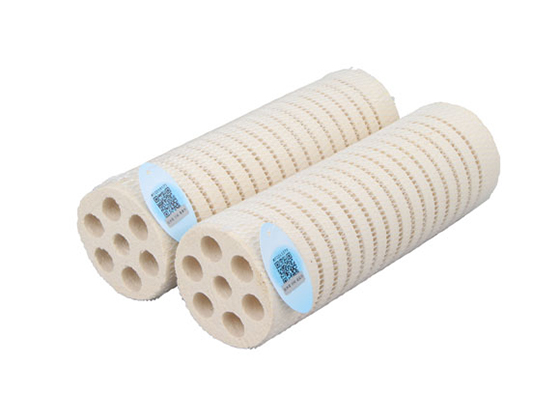
Nitrobacteria thrive in the ideal habitat provided by special lotus roots and nanopores, which improves their ability to cope with toxic nitrate and nitrite. The mesh protector can decrease product damage during transit while also increasing the three-dimensional area required for germs to reproduce and flourish. The net covering does not need to be removed while used.
Features:
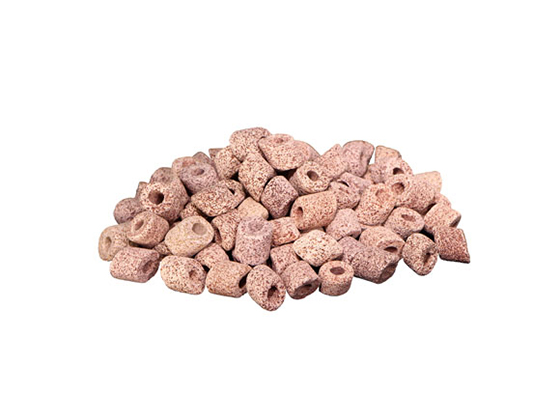
The innovative oblique section structure of the ceramic filter media directs oxygen and water flows to every nook and cranny of the media to promote the growth of bacteria. For the benefit of aquatic life, it releases K, Fe, Na, Ca, Mg, Zn, and other minerals.
MountainTree Mineral Rings are porous ceramic bio rings that promote bacterial growth and effectively break down nitrate and ammonia. Beneficial bacteria can effectively transform nitrogenous poisons like ammonia into less hazardous chemicals by having a home in biological media. The Mineral Ring is made of different types of natural minerals and contains alumina, which will promote the health and growth of your aquatic plants.
By providing enough water and oxygen, the oblique section construction aids in the culture of nitrobacteria. A large number of beneficial bacteria can grow in large colonies on and inside each ring thanks to the hollow design, which also efficiently distributes water flow.
Features:
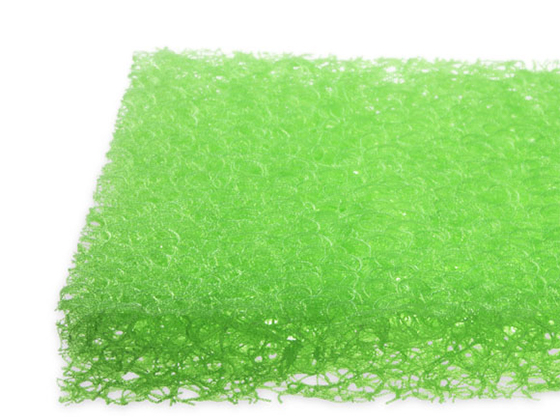
A filter is necessary for every koi pond in order for the fish to live comfortably and healthily. Pond clogging is avoided and bacteria growth is enhanced using filter mats and foams. Koi pond filter pads have a vital role in keeping the ponds clean, but their primary objective is to create a stable environment where nitrifying bacteria may thrive.
A trustworthy filtration system can be used to keep the water in ponds at a healthy temperature, which is necessary for nitrifying bacteria to proliferate and live. Our fish pond filter foam makes this feasible.
Features:
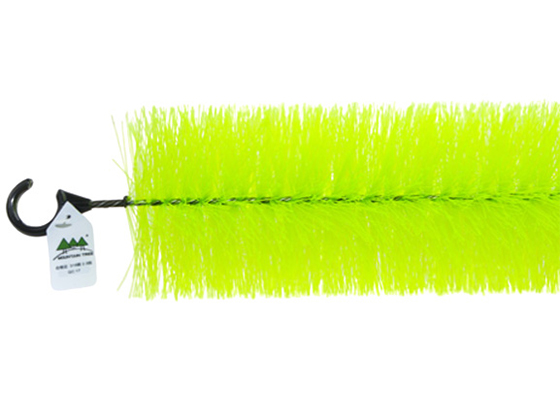
The star filter brush, which has an open hook and a six-pointed star filament, is frequently used in filtration systems found in fish farms, public aquariums, Koi ponds, and backyard garden ponds. It cultivates bacteria and has good physical and biological filtration for blocking wastes.
With the six-pointed star filament, it offers filtering power that is four times stronger than that of typical single-thread brushes. Its weight bearings are made of 304/316 stainless steel, which prevents secondary contamination. Due to its superior physical and biological filtration, trash is blocked and microorganisms are grown.
Features:
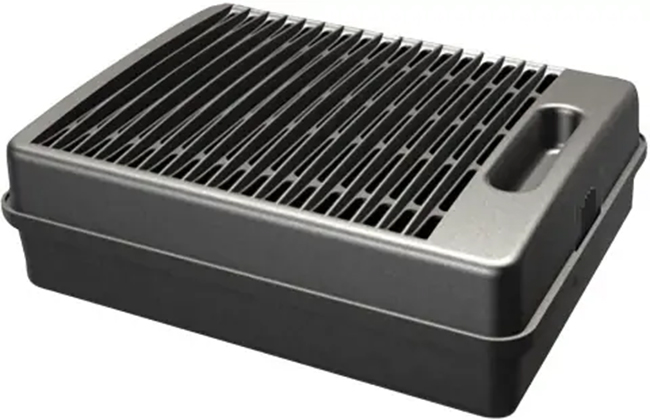
The TetraPond Submersible Flat Box Filter is the greatest pond filter you can get if you’re on a tight budget. To keep your water clear, this product combines two stages of filtration using fine and coarse filter pads. It comes with all the tubing and connectors needed to attach the filter to a pump, as well as filter material.
It has a capacity of 200–2,000 GPH and can maintain ponds up to 500 gallons in size. This filter will blend nicely with the pond’s bottom because it is completely submerged and black. This filter has dimensions of 12.44″x10.31″x4.66″ and should fit comfortably on the pond’s bottom because it is broad and flat.
This filter does not come with the requisite pump; as a result, you will need to buy a separate pump with a 200–2,000 GPH pumping capacity. There is no UV light or any other additional special characteristics in this filter. To prevent clogging, the filter medium does need regular cleaning.
Features:
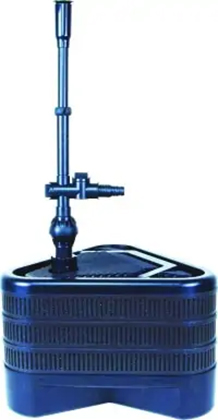
The Lifegard Aquatics Trio Fish Pond Filter is the top choice for a pond filter. This submerged filter employs mechanical and biological filter media in two stages of filtration to keep your pond clean. It can handle a pond up to 4,000 gallons and is designed primarily for ponds with animals, making it a good choice for fish and amphibians.
You won’t need to buy a separate pump because this filter has one built-in. A fountain with spray attachments is also included, adding a stunning water feature to your pond. This filter’s electrical cord is 20 feet long, so you can avoid using an extension cord as often.
This pump is one of the bigger underwater filters on the list, measuring 16″x16″x11″. Triangular filter foam manufactured specifically for this filter is used in the filter. It could be challenging to locate replacements if you need to replace the foam.
Features:
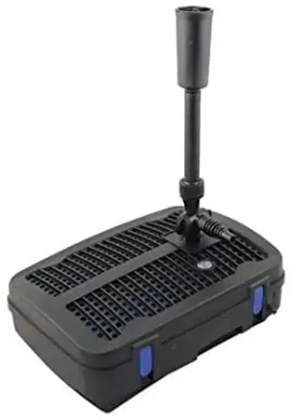
The CNZ All In One Pond Filter with 13W Sterilizer is a two-stage filtration system that incorporates three baskets of biological filtration media and a sizable piece of filter foam for mechanical filtering. In order to improve water purity, it has a 13-watt UV sterilizer.
It has a built-in pump and can handle ponds up to 1,200 gallons in volume. The fountain tube on the 32-foot electrical cord can be extended from 9.66″ to 15.77″. Another option is to direct the water flow to a waterfall or other distinct water feature. The size of this submersible pump is 14.98″ x 10.56″ x 5.36″.
A screwdriver is needed to pry the filter pump and UV light out of their housings in order to clean and maintain them. The UV filter is designed more for prevention than for treating an existing algae problem because it is stated that it is meant for ponds without major algae growth. If the pump is running, the UV light cannot be switched off and remains on constantly.
Features:
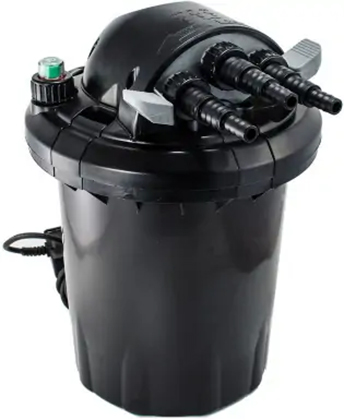
The two-stage filtration system of the Jebao Easy Clean Bio-Pressure CF-10 UV Sterilizer Pond Filter employs bio-balls and foam filter media for chemical and mechanical filtration. It has a UV lamp and a dual filtration system that allows for maximum efficiency. It can sustain both a 500-gallon pond for fish with high bio loads, such as koi and a 1,000-gallon pond for low-bioload fish. To reduce the need to open the filter for cleaning and maintenance, it incorporates a backwashing mechanism and a cleaning indicator. The item is 15″x 8″x 8.75″.
The pump and hoses needed for this filter to work are not included. You must swap out or reposition the filter foam to slow the flow. Other than that, the flow cannot be changed. This filter creates pressure inside in order to work. When the power is turned off, the pressure drops, which could result in the latches opening. This implies that instead of returning pond water to the pond when the power is turned back on, the filter may leak pond water.
Features:
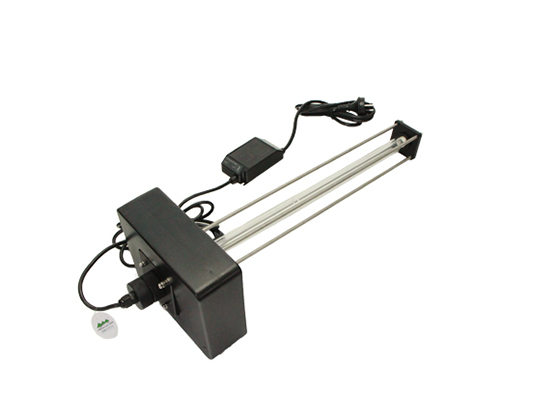
The UV sterilizers provide immediate purification throughout the filtration process and are made to be safe for aquatic life. For koi and other fish to live in a healthy and sustainable habitat, ponds must be constantly tended to and maintained. In order to control the green water that algae produce in ponds and aquariums, ultraviolet light systems are used as filters.
A UV sterilizer for ponds isn’t really a filter because it doesn’t remove wastes and solid particles from the water. In order for beneficial bacteria to exist and reproduce in the water and create a healthy living environment, it must eliminate free-floating algae.
The UV sterilizer pond from Mountain Tree offers a practical way to get rid of algae bloom in any filtration system. Our sterilizers’ UV rays can also get rid of dangerous parasites, germs, and other microbes that could harm fish, plants, and other aquatic life.
Features:
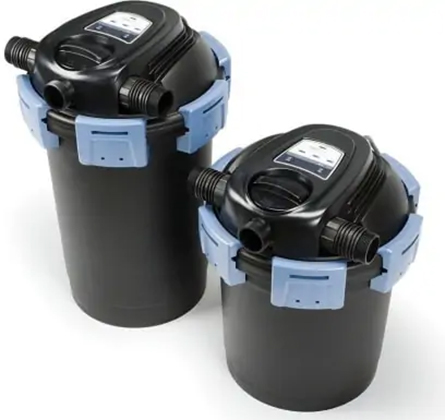
For ponds up to 2,000 gallons, the Aquascape UltraKlean Biological Pressure Filter with UV Sterilizer is an external filter. It includes bio-balls that serve as mechanical and biological filtration. On top of the filter, there are simple-to-use controls and a UV sterilizer. The UV light may be adjusted independently from the pump and has its own on/off button. The backwash feature on this filter makes filter cleaning simple.
The necessary pump is not included with this filter. There is a kit available that does come with a pump, but it might not be the most economical choice. The hoses required to connect it to the pump are not included. Even though filter media is provided, only bio-balls not the most effective alternative for mechanical filtration are provided.
Features:
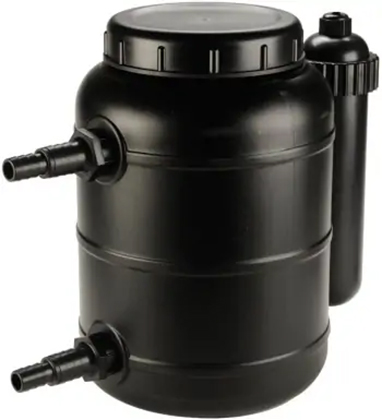
Bio-balls, coarse filter foam, and fine filter foam are all included in the TotalPond Complete Pond Filter with UV Clarifier, which uses two stages of filtering. Your pond will stay clear of algae blooms and clean thanks to the UV light water clarifier and these filtering processes. Because this filter is pressured, it may lift water for waterfalls to higher elevations.
Additionally, this pressure keeps the water circulating and prevents waste and silt from settling on the pond’s bottom.
This 9.6″x16″x13″ filter has a capacity of 1,200 gallons and can help maintain ponds of that size. The pump must be purchased separately because it is not included with this filter. The 16-foot power cord might not be sufficient to operate the filter without an extension cord. The hoses required to operate this filter must be purchased separately.
Features:
Any material that removes suspended solids from your pond’s water qualifies as mechanical filter media, although sponge, foam, brushes, matting, or polishing pads are the most common types. There is no “optimal material” type in this situation because all of the materials work reasonably well to remove debris.
Having said that, foam is recommended for most filters since it is adaptable, easily accessible, and frequently designed in a variety of sizes for maximum debris removal. Although they often have a more coarse and wiry texture, Japanese-style filter pads are also a suitable option. High-quality polyurethane, a polymer with flexible and stable qualities, is used to create the majority of mechanical media in the foam type.
Water and debris will need more time to move through mechanical mediums that are thicker. Although thicker media offers higher filtering and more material removal, it can also cause your filter to build up more pressure. Depending on how coarse it is, thicker media may also impede water flow, which can lower the amount of oxygen in your pond.
Despite the fact that every type of media is unique, as a general rule, we suggest media with a thickness of 1-2 inches for the majority of applications. This shouldn’t have a significant impact on water flow and should yield good filtration performance.
If the media is free to move inside your filter box, there is something else to take into account. Some biological filter media, typically foam or matting, are utterly static in opposition to the water flow from your pump. The issue with this is that without manual cleaning, dead bacteria cannot be properly removed from the media and slowly accumulate. Less biological filtration can occur the more dead bacteria there are.
Individual bio-media that is lighter and more mobile can migrate about your filter box when water passes through it. The medium moves freely and self-cleans as a result of the pump’s chaotic movement, eliminating any dead bacteria so that new germs can flourish. K1 rings, K3 rings, and various ceramic rings are examples of biological media that all offer movement and some level of self-cleaning.
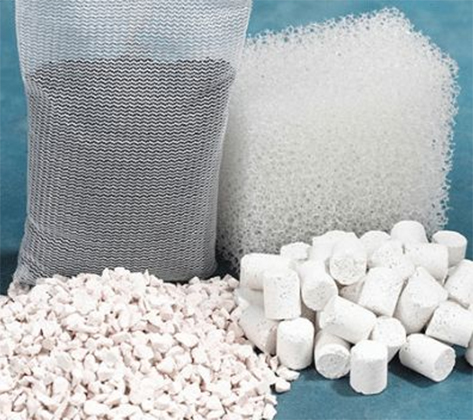
The lifespan of filter media is typically 10 to 15 years. Depending on your raw water quality and filter maintenance, the life of your media may vary. Regular maintenance can increase the life of your media. The performance of your system is frequently indicative of whether you need to change your media.
Knowing the caliber of your filter material will make it easier to spot numerous operational and performance problems. You should check your medium for mudballs and bacterial development, but you may also get it evaluated to see how effective it is. A crucial first step in assessing the quality of your media is to take an exact core sample of it.
It would be advantageous to service your underdrain and air wash systems at this time as well if you decide that you do need to replace your media because these systems are not frequently available for inspection.
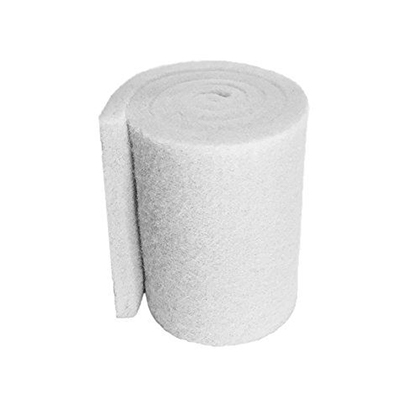
A pond filtration system helps with:
A filtration system keeps the water clean and the health of the natural ecology and gives:
In challenging circumstances, our filtering technology excels, withstanding extreme cold or heat.
Our filtering system’s components are made of high-quality polyethylene, making it UV and shock resistant and durable.
Simple repairs and alterations are possible due to the flexible plastic nature. To suit certain requirements, components and accessories can be customized.
Our knowledge contributes to the filtration technology’s assembly to preserve its superior physical and biological filtration performance. You can take a look at our filtration system to know more.
This was all you need to know about choosing the best pond filters. The process of selecting the ideal filter for your pond doesn’t have to be difficult and full of subpar options. Choose the right filtration system for your pond based on these reviews and information. That will enable you to reduce your selections and select the ideal filter for your pond.
Leave a Reply